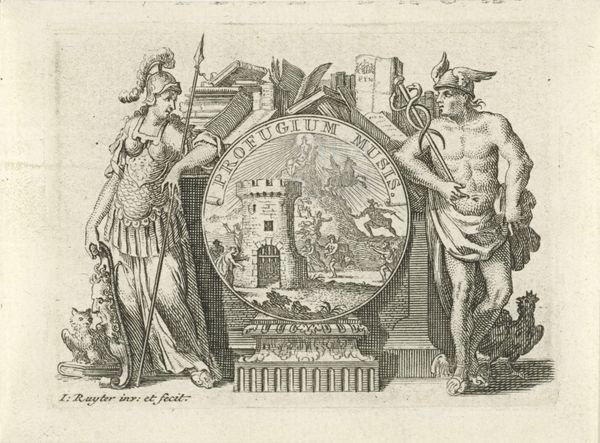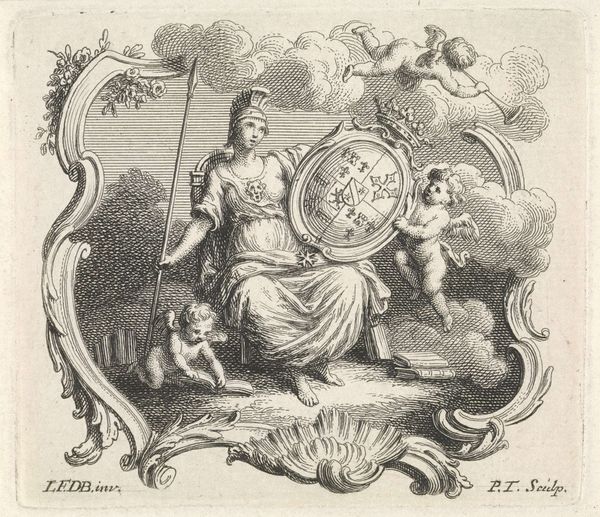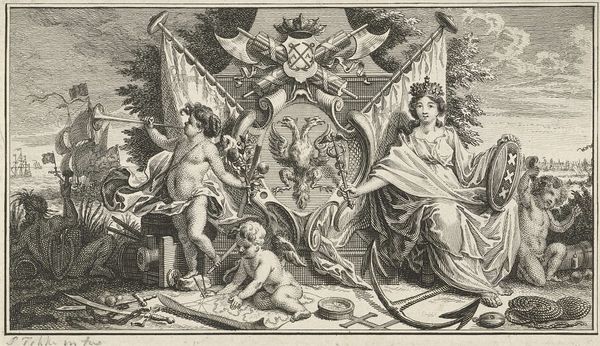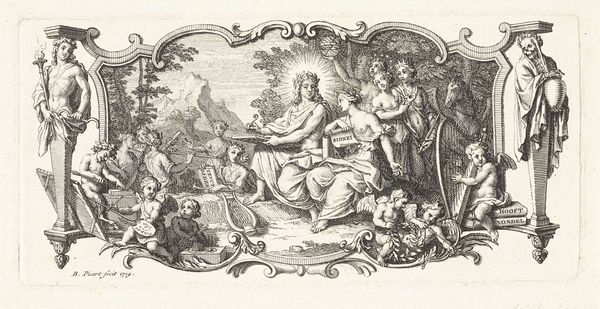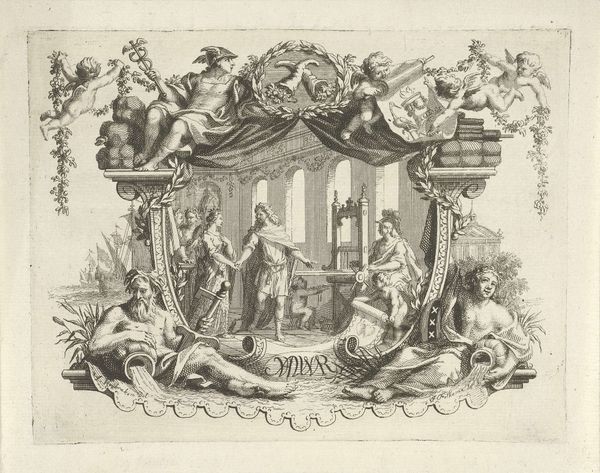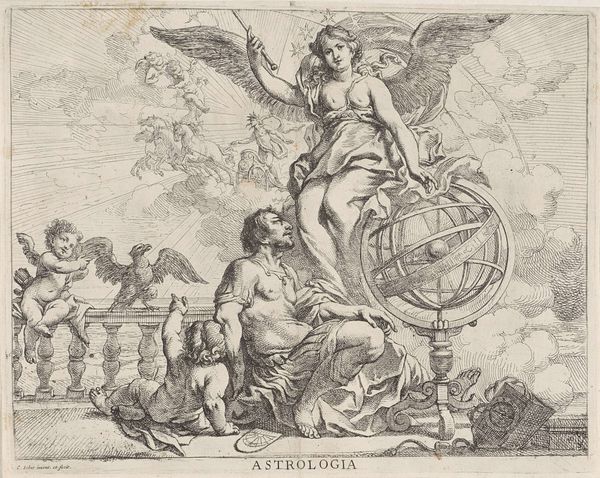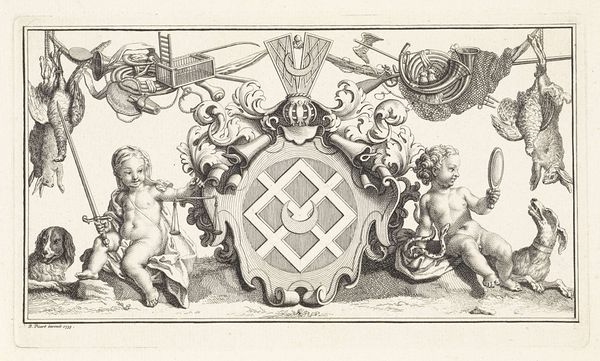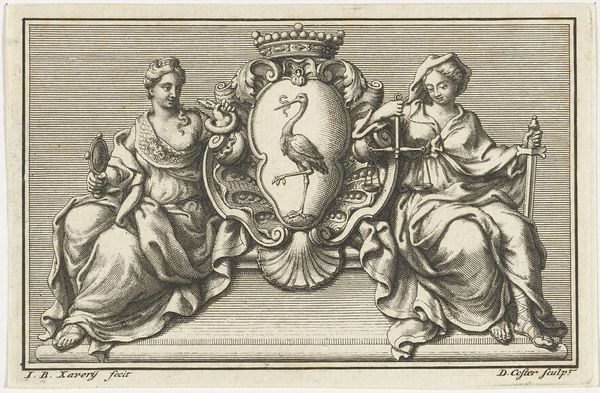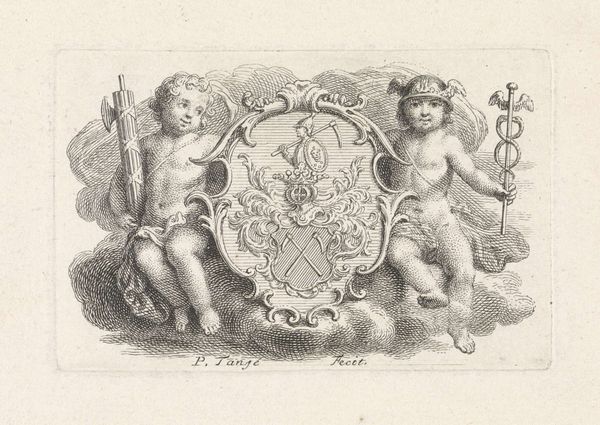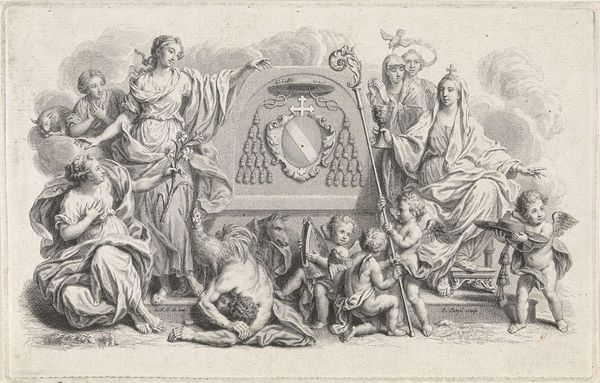
graphic-art, print, engraving
#
graphic-art
#
allegory
#
baroque
# print
#
history-painting
#
engraving
Dimensions: height 85 mm, width 155 mm
Copyright: Rijks Museum: Open Domain
Editor: So this is Pieter Tanjé’s "Wapenschild van Stephanus Laurentius Neale," dating to between 1716 and 1761. It's an engraving, showcasing elaborate imagery around a central coat of arms. It has such an imposing and formal presence. How would you interpret this piece? Curator: It’s a fascinating example of the use of imagery to project power and legitimacy in the 18th century. Consider the function of coats of arms in that era – they weren't just decorations; they were carefully constructed statements about family history, social standing, and political allegiance. Who was Stephanus Laurentius Neale and what position did he occupy in society? That would explain this elaborate staging of his identity. Editor: I see… he’s embedding himself in a larger narrative, linking himself to these allegorical figures and symbols of global reach, almost claiming a legacy. Curator: Precisely. Note the figures representing different continents, perhaps alluding to trade and colonial power. Look also at the Indigenous children – how do they contribute to this assertion of power? Are they romanticized, subjugated, or both? What message about Dutch power is Tanjé conveying? Editor: It’s striking how it connects personal identity to these global forces... Almost like claiming ownership over them through the imagery. And now I notice how the details around the shield might even represent contested claims or aspirations. Curator: Exactly. These weren’t innocent artistic choices; they reflect the complicated interplay between individuals, families, and the burgeoning Dutch colonial project. What did it mean to stake a claim in that visual landscape? How might those images affect how the population saw itself? Editor: That's a crucial question; shifting the focus from the individual to the wider impact. Thanks; I hadn't considered how the visual language contributes to shaping public perception of the time. Curator: Thinking about these things, the political implications, and social roles reframes our understanding.
Comments
No comments
Be the first to comment and join the conversation on the ultimate creative platform.
